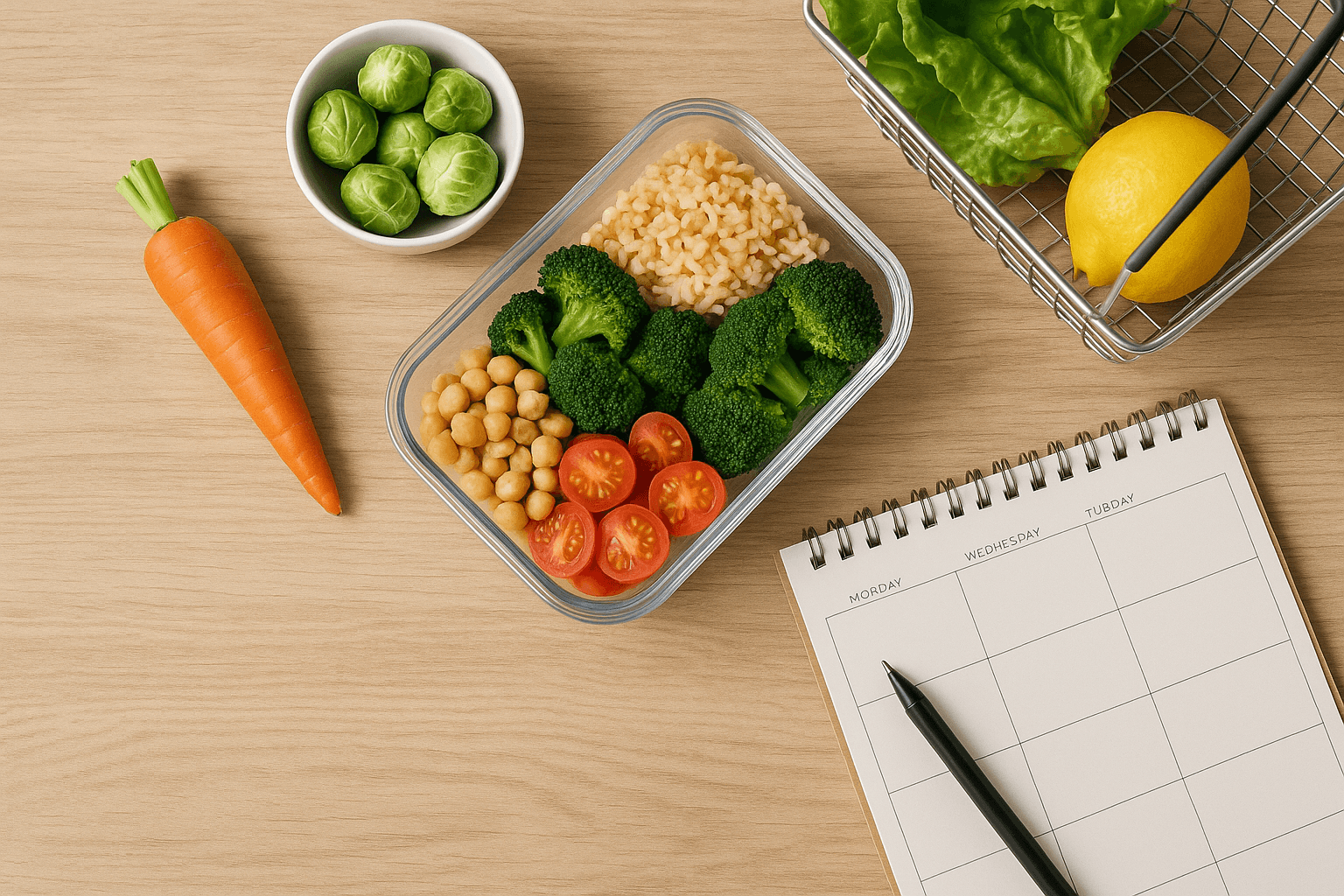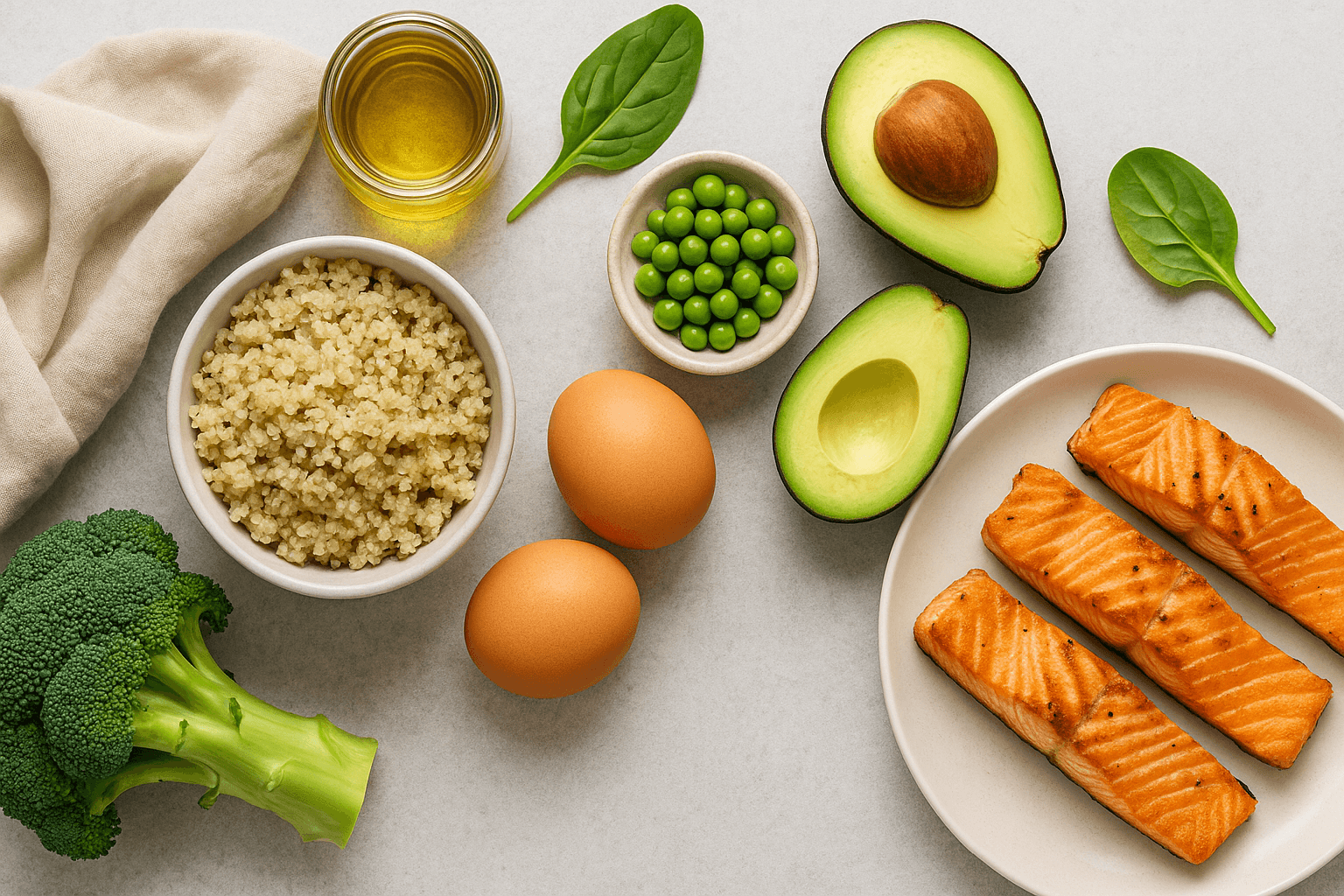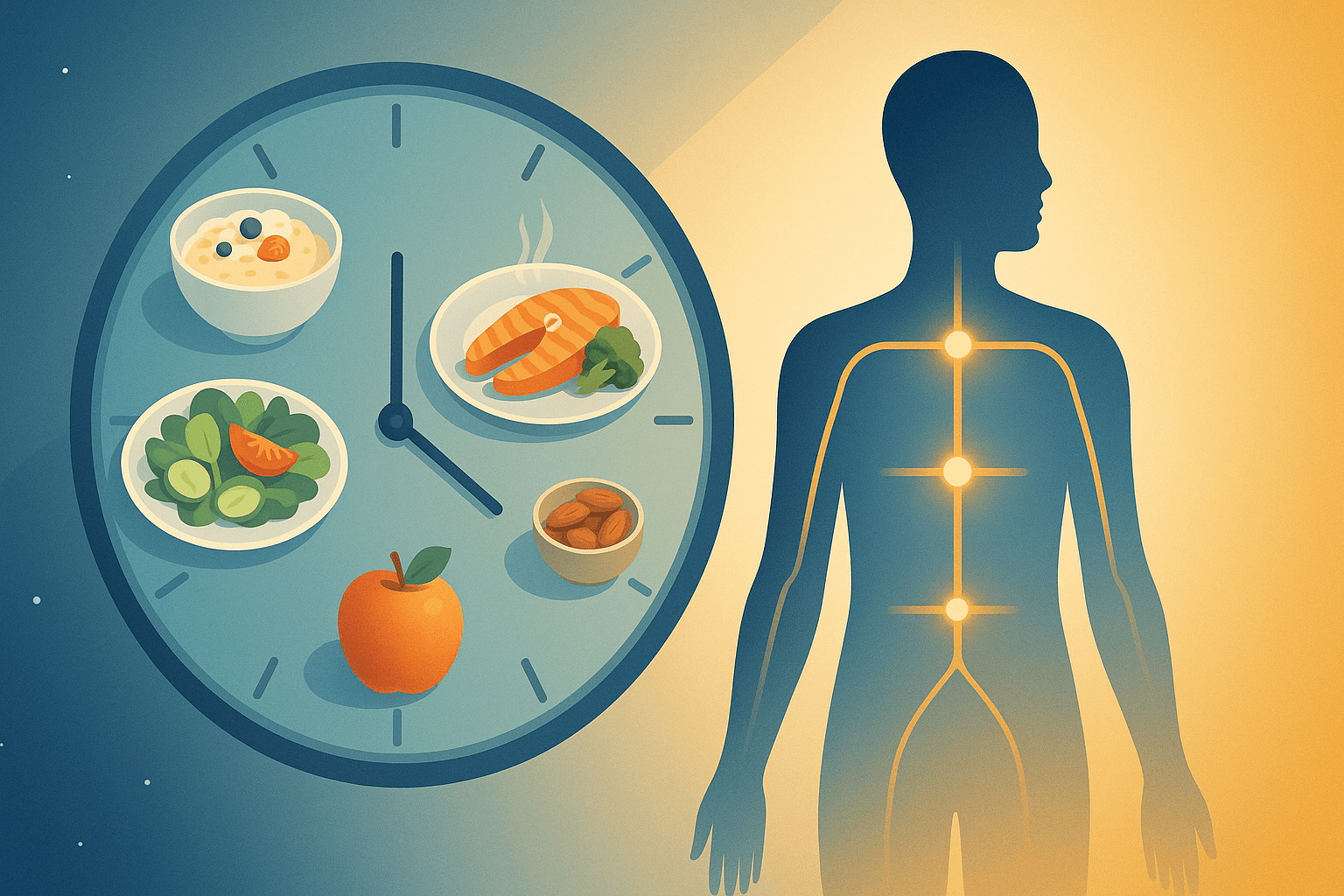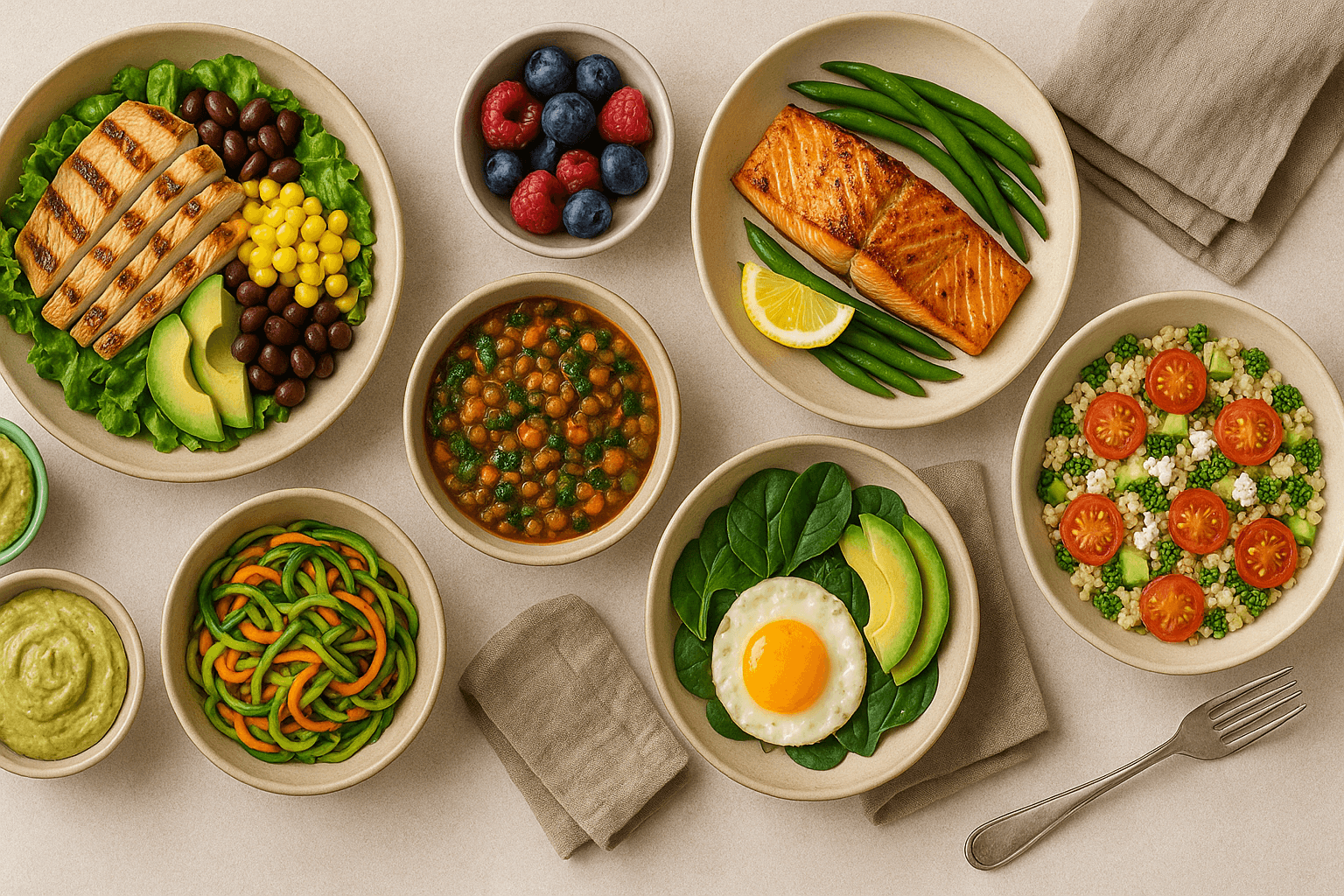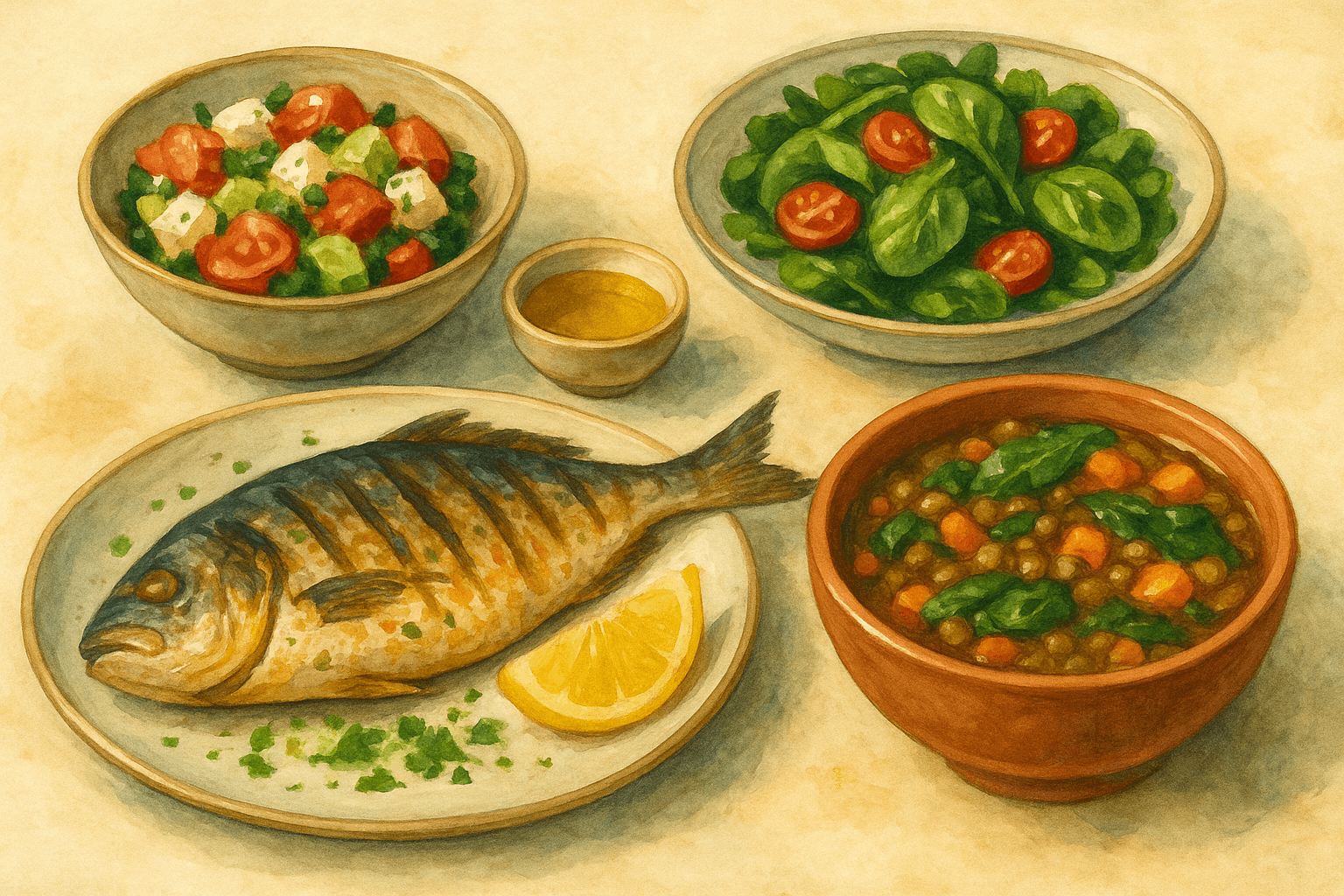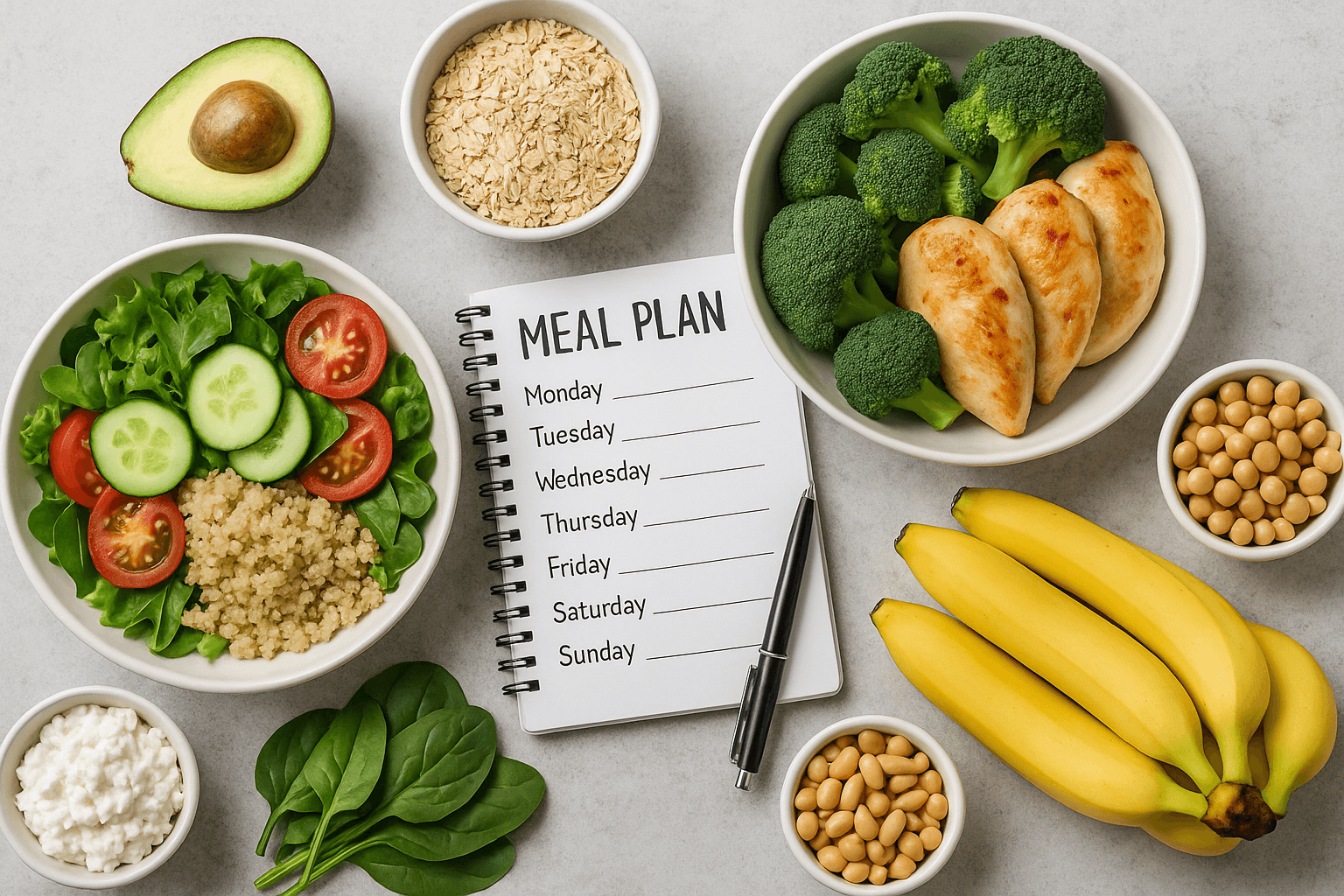MEAL PLANNING FOR REAL LIFE: THE SCIENCE, STRATEGIES, AND SECRETS FOR DIETERS, PARENTS, BINGE EATERS & RECOMMITTERS IN RECOVERY TO CREATE PRACTICAL, SUSTAINABLE, AND DELICIOUS MENUS
Published on July 30, 2025
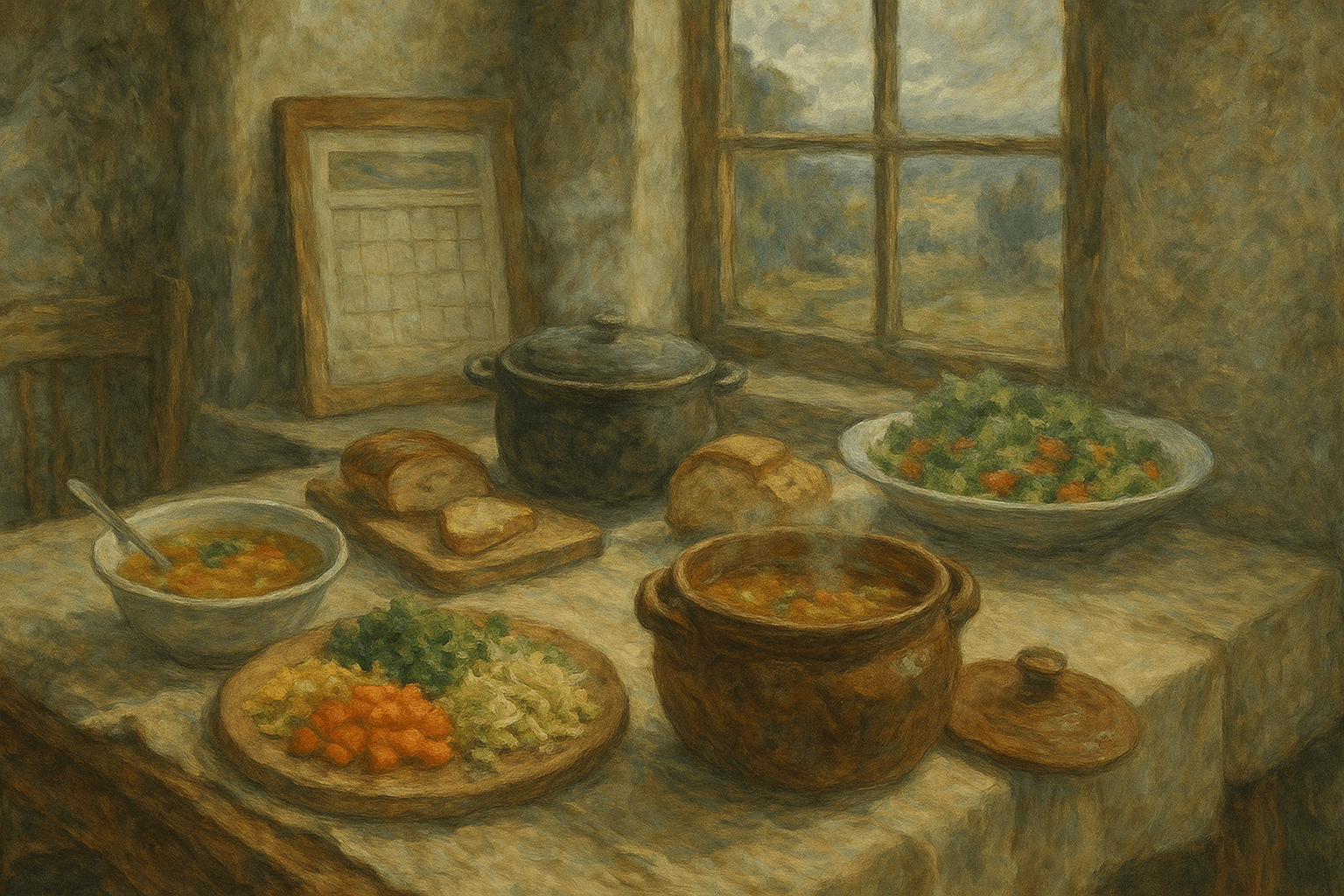
Meal planning is often seen as a chore or the domain of the hyper-organized, but the real secret is that meal planning, when done right, creates an adaptable, joyful, and stress-minimizing foundation for healthy eating. It doesn’t mean rigid schedules or repetitive blandness—it means having a framework that actually makes your days easier, your meals more nourishing, and your life a little less overwhelming week by week. A good meal plan is self-care, a money-saver, a health-booster, and a way to keep pleasure on the plate.
Why Meal Planning Matters: The Science
Most people don’t make poor food choices from ignorance, but because of fatigue, stress, distractions, or sheer overwhelm from too many decisions. Meal planning shines by investing a little time up front for a week of delicious, healthy wins.
Studies show that planning meals in advance leads to more whole grains, fruits, and vegetables, less ultra-processed food, fewer skipped meals or episodes of overeating, and better portion control. For health goals like diabetes, cholesterol, weight, or muscle, meal planning is a proven powerhouse. It also cuts food waste, impulse spending, and takeout.
Meal planning also beats “decision fatigue”—that end-of-day feeling when you just can’t think anymore. When you know what’s for dinner and you have the ingredients, you’re more likely to stick to healthy intentions. Over time, this builds confidence, reduces guilt, and takes away meal-time dread.
The Building Blocks of Good Meal Preparation
Variety
Diversity in food = diversity in nutrients. Each fruit, veggie, grain and protein brings unique vitamins, minerals, antioxidants and fibers. Variety keeps the microbiome happy, supports immunity, prevents boredom, and reduces risk of deficiencies or intolerances.
Balance
Every meal should include complex carbs, lean protein, healthy fat, and plenty of colorful, fiber-rich vegetables. This mix delivers stable blood sugar, long-lasting energy, and satisfaction (not just fullness).
Flexibility
Life happens! The best meal plans make space for the unexpected—fast-prep meals, leftovers days, and the ability to swap days when needed. Flexibility is what makes meal planning sustainable and friendly, not rigid or punitive.
Simplicity
You don’t need to cook gourmet dishes every night. Choose recipes you like and can make easily. Master roasting, stir-frying, and slow-cooking for endless variety with minimal effort. Shortcut foods (prewashed greens, frozen veg, canned beans) are allowed!
Realism
Don’t force yourself to cook big meals if you’re tired. Build in dining-out nights and honest assessments of your week. The best plan is one that fits your actual schedule and capacity.
How to Build a Meal Plan That Works for You
Define your goals and your reality
Know if your priority is weight loss, muscle gain, blood sugar, or just easier, happier meals. Are you feeding just yourself, a couple, a family, or dealing with allergies? Map your week: meetings, events, travel? Knowing your goals and reality makes meal planning personal and doable.
Select a Planning Design
Traditional Weekly Plan:
Map out breakfast, lunch, dinner, and snacks for each day—great for those who love routine and want one weekly shop and prep day.
Batch Cooking:
Make large amounts of staples (grains, proteins, roasted veggies) to mix and match quickly. Perfect for flexible eaters or busy schedules.
Theme Nights:
Assign themes—Meatless Monday, Taco Tuesday, Soup Wednesday. It reduces decision fatigue, builds in fun, and keeps family favorites on rotation.
Cook Once, Eat All Week:
Batch cook a protein, grain or stew and use it in different forms—salads, sandwiches, bowls—throughout the week. Huge time-saver.
Build Your Framework
Breakfast
Fast and balanced—overnight oats, smoothies, eggs, yogurt and fruit, or nut butter toast. Prep ahead if you’re rushed in the mornings.
Lunch
Think portable and filling—grain bowls, hearty salads, wraps, or leftovers. Pair with fruit or nuts.
Dinner
Focus on balanced plates—lean protein, healthy carbs, at least half a plate of veggies, a little fat. Sheet-pan bakes, stir-fries, one-pot stews make dinner easy.
Snacks
Stock up on hunger-fighters: chopped veg, nuts, seeds, roasted chickpeas, fruit. Prep and portion ahead for easy grab-and-go options.
Add Your Groceries to the List
After planning, check what’s already at home and make a shopping list by store section. This cuts down impulse buys, helps you stick to your plan, and saves money.
Example Meal Plans
1-Day Simple Plan
Breakfast: Greek yogurt with berries, chia, and walnuts
Lunch: Quinoa, chickpeas, roasted sweet potato, spinach, pumpkin seeds, lemon-tahini dressing
Snack: Carrot sticks and hummus
Dinner: Grilled salmon, brown rice, steamed broccoli, avocado slices
3-Day Balanced Plan
Day 1
Breakfast: Oatmeal with banana, cinnamon, almond butter
Lunch: Turkey & veggie wrap, grapes
Snack: Apple slices with peanut butter
Dinner: Soba noodles, tofu, stir-fried broccoli, bell pepper, carrots
Day 2
Breakfast: Scrambled eggs, spinach, tomatoes, whole grain toast
Lunch: Lentil soup, whole grain bread, arugula salad
Snack: Cottage cheese and pineapple
Dinner: Chicken fajitas, bell peppers, onion, brown rice
Day 3
Breakfast: Chia pudding with almond milk, mango, coconut
Lunch: Mediterranean quinoa bowl, zucchini, chickpeas, tomato, cucumber, feta
Snack: Greek yogurt with berries
Dinner: Baked cod, sweet potato mash, roasted asparagus
7-Day Family-Friendly Plan
Day 1: Potato & veggie skillet; roast beef wraps; sheet-pan chicken bacon ranch; hummus & veggie snacks
Day 2: Egg-spinach-mushroom casserole; Sonoma chicken salad; chicken & broccoli stir fry; salted peanut butter energy balls
Day 3: Mint chip protein smoothie; roast beef pita wraps; chicken parmesan skillet; chia pudding
Day 4: Overnight oats; Greek chickpea bowl; veggie chili; fruit salad
Day 5: Omelet muffins; tuna salad sandwiches; veggie lasagna; homemade granola bars
Day 6: Smoothie bowl; lentil curry; BBQ chicken, roasted carrots, sweet potatoes
Day 7: Breakfast burrito; tofu veggie stir-fry; salmon patties with quinoa and peas; Greek yogurt with honey and almonds
Let kids choose one meal or ingredient a week to boost confidence and reduce pickiness.
Meal Prep Tips from a Dietitian
Batch roast veggies:
Chop and roast a few trays of mixed veggies (carrots, peppers, sweet potato, cauliflower) each week for easy sides, salads, or bowls.
Cook grains and proteins in bulk:
Double up brown rice, quinoa, beans, or roast/poach extra chicken, fish, or tofu to add into meals all week.
Pre-chop and wash produce:
Rinse and chop fruit and veggies when you get home; keep them visible for easy, healthy snacking.
Embrace your freezer:
Freeze portions of soups, stews, cooked grains, or smoothie packs for fast, healthy options.
Double sauces and dressings:
Big batch of vinaigrette, herbed yogurt, or tahini sauce keeps meals interesting.
Portion snacks ahead:
Bag nuts, trail mix, chopped veg or fruit into grab-and-go portions.
The Psychology of Meal Planning
Meal planning is more than just a to-do—it’s about habit, self-care, and building an environment that supports healthy eating automatically. Planning and prepping make healthy choices easier, remove obstacles, and boost confidence. Visual reminders (meal plan on fridge, grocery apps, scheduled prep times) keep you on track.
When life throws curveballs, meal planning offers a safety net—healthy options on hand, less temptation for takeout, and fewer “willpower” battles. Progress, not perfection! Every effort at planning is a step forward in confidence and skill.
Meal Planning for Special Needs
Diabetes:
Aim for steady carbs, lots of fiber, a balance of protein and healthy fat. Time meals with meds or insulin for the best results.
Weight Loss:
Plan high-volume, low-cal foods like veggie soups, salads, lean proteins to keep portions and calories in check.
Athletes/Active people:
Include easy carbs and protein for recovery; batch cook rice, chicken or beans for grab-and-go meals.
Allergies/Intolerances:
Avoid problem foods, plan for substitutes, prep allergy-friendly staples and snacks.
Families/Kids:
Get kids involved, rotate favorites, keep meals interactive and fun.
When Meal Planning Feels Hard
Keep a backup list of easy meals from pantry/freezer staples (canned beans, frozen veg, eggs, pasta, jarred sauce).
Be okay with imperfection—any planning is progress.
Put your plan somewhere visible.
Repeat what works—routine favorites are comforting.
Share the load—divide duties with family or housemates.
Every meal plan, even imperfect, grows your skills for life.
The Bottom Line: Meal Planning as Self-Care
Meal planning is not about rigid rules or chasing perfection—it’s a gift for yourself and those you love. It’s about making the future you’s life easier, happier, and more delicious. Every little effort counts, and over time, confidence, creativity and resilience grow. Celebrate the wins, learn from the rest, and let your food nourish both body and soul.
With each meal you plan, prep and enjoy, you’re investing in your health, happiness, and future well-being.



